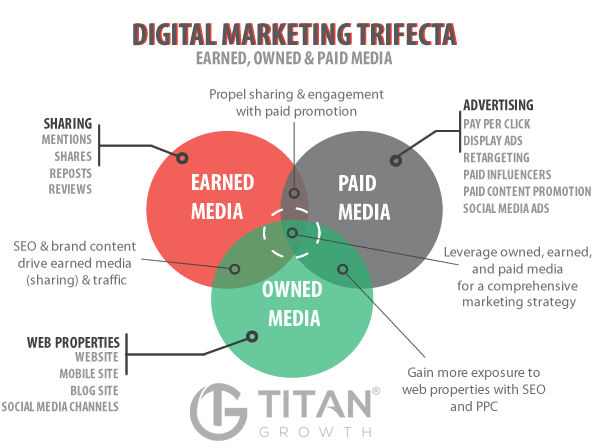What Is Online Paid Advertising? (Plus 6 Things to Know)
by Admin
Posted on 19-06-2023 12:34 PM

Native advertising is paid advertising that fits so seamlessly into the design of the surrounding media or website that it feels like it’s part of the experience.
 Consider the way the ads you see while scrolling through your
online Advertising
media feeds look just like the rest of the posts versus how an old-school banner ad on a website sticks out as something that doesn’t quite belong. While traditional online advertising can be jarring and disruptive to a person’s user experience , native advertising blends nicely into the editorial flow of the content around it. It makes it easier to expose an audience to advertising without also making them feel intruded upon or otherwise interrupted.
Consider the way the ads you see while scrolling through your
online Advertising
media feeds look just like the rest of the posts versus how an old-school banner ad on a website sticks out as something that doesn’t quite belong. While traditional online advertising can be jarring and disruptive to a person’s user experience , native advertising blends nicely into the editorial flow of the content around it. It makes it easier to expose an audience to advertising without also making them feel intruded upon or otherwise interrupted.
Paid advertising is an online advertising model where advertisers bid to participate in real-time auctions in order to show their ads within slots on a specific platform or network. For example, in this search on patio furniture you can see both shopping ads and text ads. It is also sometimes called biddable media or ppc advertising. Ppc stands for pay-per-click advertising as you usually pay every time someone clicks on your ads. This model is usually opposed to earned or owned advertising where you can use a platform to push your content for free i. E. Facebook or linkedin posts.
Digital paid advertising campaigns are any form of advertising that you will pay for online. Paid media comes in many different forms and outlets, including: • search engine results in pages (serps) • pay per click (ppc) campaigns • social media marketing • influencer marketing paid ads are a cost-effective way to grab the attention of a digital audience that’s already active online. If what you show them is relevant and captivating, there’s no reason why your campaign can’t be a success.
Paid advertising , as the wording implies, is online advertising that one pays for. Examples of paid ads include pay-per-click (ppc), programmatic advertising, google ads, google display, facebook ads, twitter ads, linkedin ads, google and facebook remarketing, and more. Paid ads are powerful because a marketer can segment their audiences and present very specific ads to potential customers. There are typically two billing methods the ad platforms utilise: ppc (pay per click): the advertiser is billed each time the ad is clicked. Cpm (cost per 1,000 views): the advertiser is billed per one thousand ad impressions on a web page.
Display ads are offered by a lot of websites, news sites and publishers (think local & national media outlets ), and third party aggregators who will decipher the internet and place your ad in different online locations for you based on audience or targeting parameters. This is how a lot of news-based websites and blogs create their revenue. While you can successfully advertise on social channels with a small budget, the barriers to entry on paid display advertising are usually higher and require a significant investment up front before you can test or see any roi. On the other hand, these outlets and online blogs typically have proven, defined audiences that give them consistent attention.
What is online paid advertising?
Whether your investing in paid social vs. Paid search ads, you’ll need to how to implement an effective ad campaign to drive results. As the internet has developed, paid advertising has become detailed and diverse. Navigating the right platforms with useful strategies requires background knowledge on how paid online advertising works. Let’s break it down into the following six elements.
